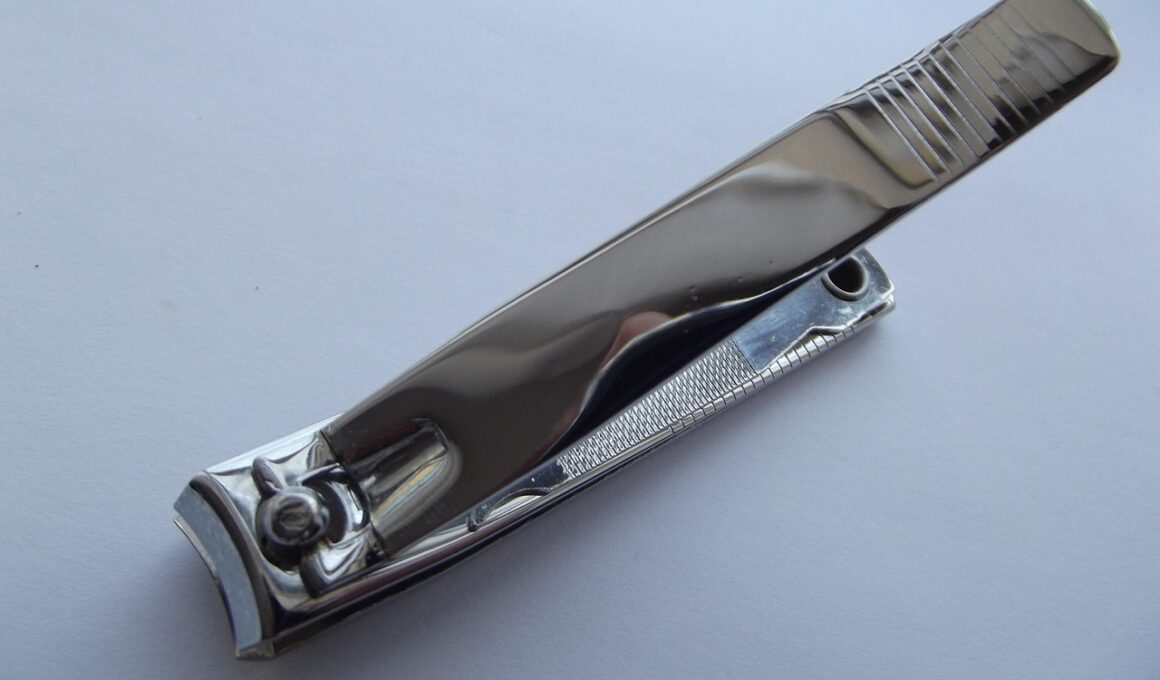Best Nail Trimming Techniques for Long-Haired Cats
Trimming your long-haired cat’s nails is crucial for their health, safety, and comfort. Long nails can lead to discomfort, injuries, and even behavioral problems in feline companions. The process requires patience and good techniques, ensuring that the experience is positive for both you and your pet. Start by getting your cat accustomed to being handled. Gradually introduce them to the clippers, allowing them to sniff and inspect the tool. This builds trust and reduces anxiety. Choose the right time for trimming, such as after a calm play session or while your cat is relaxed. Having treats on hand as positive reinforcement will help create a positive environment. It’s necessary to pick the proper nail clippers specific for cats, as human nail clippers tend to crush their claws. Pay attention to the quick, which is the pink part of the nail containing blood vessels. If your cat has dark nails, identify where the quick is by trimming small amounts at a time. Using proper lighting will make it easier to see and avoid cutting into the quick.
Long-haired cats may be disproportionately affected by long nails, due to naturally less active lifestyles often prevalent in indoor felines. When this occurs, they often can’t wear down their claws naturally on various surfaces, leading to overgrowth. The best approach is to maintain their claws proactively before they become a serious issue. Grooming routines should include a regular schedule for nail trimming, ideally every 2 to 4 weeks. Consistency will not only improve your cat’s comfort but also yield better results over time. Establish a grooming schedule that works for both you and your feline buddy. Pay attention to your cat’s reactions, adapting the grooming sessions to what they seem most comfortable with. Again, remember that this is a shared experience, not just a chore for you. Remain calm, speak gently, and offer treats throughout the process. It’s essential to prevent discomfort or pain during nail cutting; resist the urge to trim a nail too short. Over time, your cat may learn to relax during the process if you consistently follow these practices.
Preparing Your Cat for Nail Trimming
Preparation plays a key role in achieving successful nail trimming. Start by familiarizing your cat with the process before diving in. Use gentle techniques to acclimate them to having their paws handled. Spend a few minutes each day handling their paws without trimming. You can stroke their legs, press gently on their pads, and even wiggle their claws gently. This acclimatizes the cat to touch and reduces the chances of resistance when it’s time to trim. You should create a calm environment. Choose a quiet space where your cat feels safe and comfortable. Minimize noise and distractions during grooming to help make the experience pleasant. Consider using soothing music or soft sounds to create a relaxing atmosphere, which helps to reduce anxiety. Additionally, having a helper can be beneficial. If your feline is particularly squirmy, ask someone to assist by holding the cat while you trim their nails. This ensures that your cat remains calm throughout the process.
Maintaining control is essential during the nail trimming process. Always position your cat securely on a flat surface. Moreover, holding your cat in your lap may provide comfort, for both you and your pet. Use your non-dominant hand to hold your cat’s paw. Ensure that you’re holding it gently, not too tight. While working on the nails, take the time to trim just a few at a time. If your pet starts showing signs of distress or annoyance, take a break. Not every session needs to result in completely trimmed nails. If you can manage to trim just one or two nails in a session, that’s a step in the right direction. To create a less stressful environment during the trimming, try to use positive reinforcement techniques. After completing the trimming, shower your cat with praise and give them a treat or their favorite toy. Regularly rewarding good behavior will encourage them to be more cooperative in the future.
Post-Trimming Care for Your Cat
After trimming, it’s vital to check your cat’s paws and nails carefully. Make sure that the nails are not bleeding or excessively short after cutting, as this can be painful for your cat. If you accidentally cut into the quick, gently apply some styptic powder to stop the bleeding. Aftercare is essential for a smooth experience. Be mindful of your cat’s mood after trimming; cuddles or a few moments of relaxation can help reinforce their positive associations with the nail trimming process. Additionally, provide your feline with their favorite comfort toys or treats. Create an environment where they can unwind. Ensuring their mood remains upbeat reinforces the idea that nail trimming isn’t a negative experience. Over time, they will likely become more comfortable with the process, making each subsequent session easier. Preventing overgrowth and protecting their environment while encouraging positive associations with grooming is the goal.
In addition to nail trimming, incorporate other grooming routines to keep your long-haired cat comfortable. Regular combing will help reduce mats and tangles, preventing discomfort around their paws and ensuring health. Establish a routine grooming schedule that suits their needs, paying attention to common problem areas such as between the toes and around their pads. Cleaning should be gentle, making it essential to remove any debris that may get stuck in their fur. In contrast, ensure you also inspect their paws for any signs of injury or abnormalities that need addressing. The more familiar they are with the grooming process, the more accepting they will become, reducing stress for both you and your cat. Moreover, you can consider investing in additional tools, such as cat-friendly nail grinders, which might help your cat become more accustomed to nail care. Always remember to use positive reinforcement techniques for further socialization. A healthy routine will foster a cooperative spirit for future grooming sessions.
Conclusion and Final Thoughts
Nail trimming for long-haired cats, though initially daunting, is a manageable task that can greatly enhance your pet’s comfort and well-being. With the right preparations, proper techniques, and a little patience, you will create a routine that helps prevent anxiety and encourages a stress-free experience. It’s all about positive interactions; once your cat associates grooming with comfort and rewards, the entire experience turns into a bonding moment. Maintain that routine, keep an eye on their nails, and don’t hesitate to seek many trips as necessary. As they age, they might require more assistance with their grooming routine. Regular trimming helps avoid long or overgrown nails that could lead to injuries. Discover what works best for your cat individually and stay attentive to their reactions. Remember to celebrate your small victories as you both learn together. You’ll find that you and your cat may adapt and thrive in your shared grooming sessions. Patience and practice will lead to serene moments for both you and your precious long-haired feline.
To summarize, trimming nails carefully and consistently along with providing proper aftercare will contribute to a happier, healthier feline friend. You should ensure that you have the right tools, establish a routine, and maintain a patient yet upbeat attitude to make each session beneficial. Keeping your long-haired cat’s nails trimmed and healthy is essential for their overall well-being. In addition, it also contributes to a peaceful home, especially if your cat enjoys clawing at surfaces. With the proper approach and care, each grooming session will create a stronger bond between you and your cat, reinforcing trust and comfort in the grooming process. In turn, this positive association can lead to improved behavior and serenity in your feline friend. The key is not to rush the process, allowing ample time for adaptation and familiarity. Ensure that each nail cutting session provides rewarding experiences that your cat will grow to appreciate. Continue to learn from each experience and adapt your methods for optimal results over time. Your long-haired cat deserves the best care you can provide, and mastering nail trimming is a significant aspect of that.


